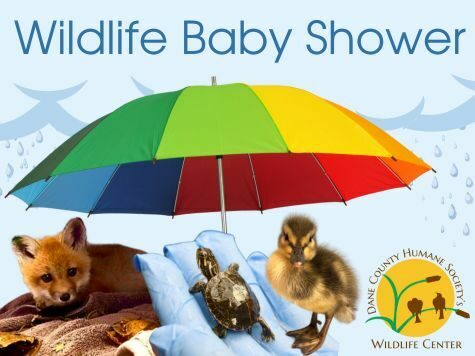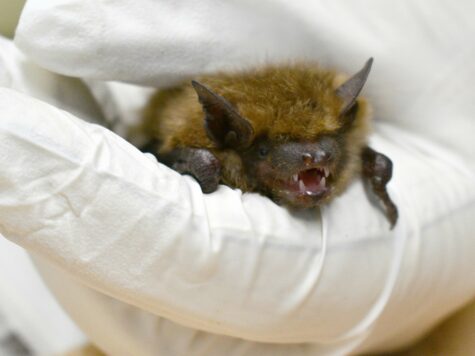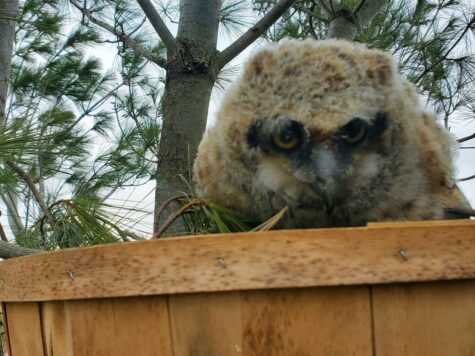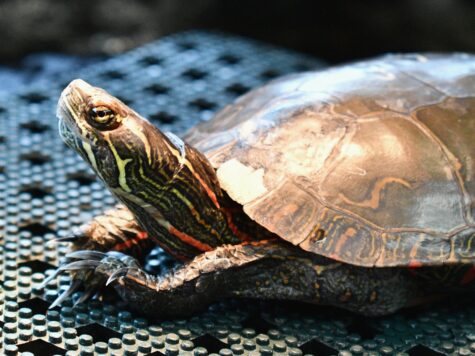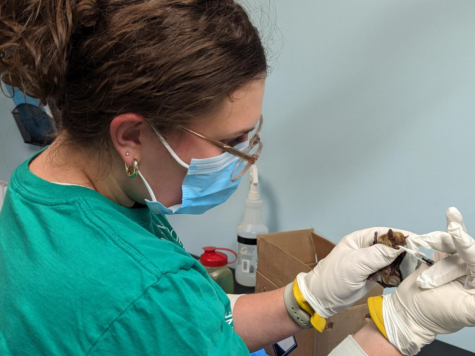Here at Dane County Humane Society’s Wildlife Center, staff have been triaging lots of calls about woodpeckers. As of today, our program has admitted six of the seven common woodpecker species that breed in Wisconsin.
Our Wisconsin woodpeckers share many life history characteristics, such as being cavity nesters, using their strong bills to peck trees and find insects, and having zygodactyl feet with two toes in the front and two in the back. Their unique foot pattern, and a sturdy tail, helps them to climb vertically up trees.
Despite the similarities they share, there are some differences in both life history and appearance of these species. So, let’s take a look at each one:
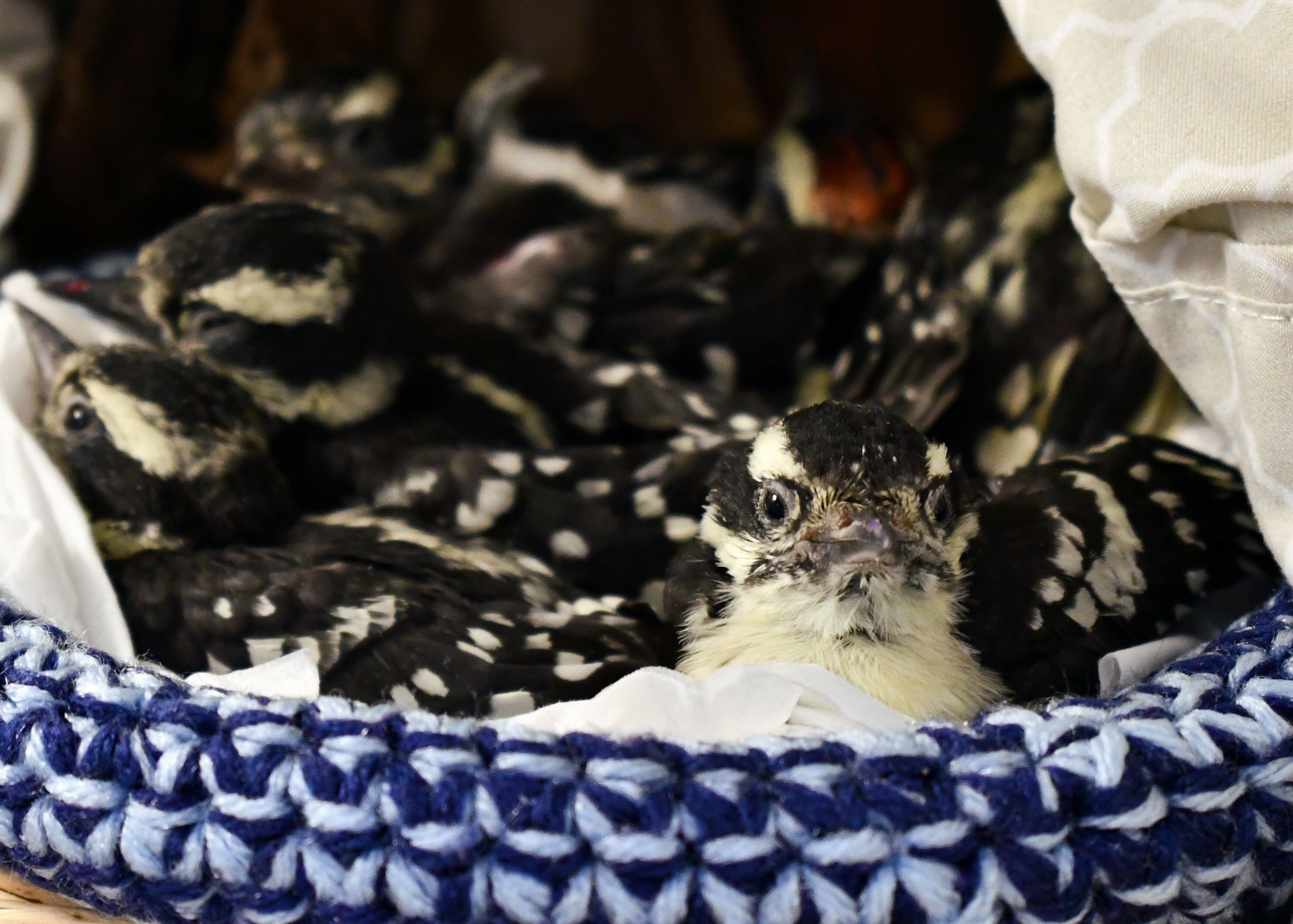
Downy Woodpecker
This is the smallest of our native woodpeckers! They measure about 6-inches long and are commonly seen at birdfeeders—especially those that offer suet. You can distinguish adult males from females by a red patch on the back of their heads.
They are the most commonly admitted woodpecker at DCHS’s Wildlife Center, and we currently have a group of six fledglings in an outdoor enclosure. They were admitted as newborns (hatchlings) and will be hand-fed by trained volunteers and songbird interns until they are old enough to move to a pre-release cage. These baby woodpeckers are great eaters, and they love to chatter, loudly, especially around feeding time!
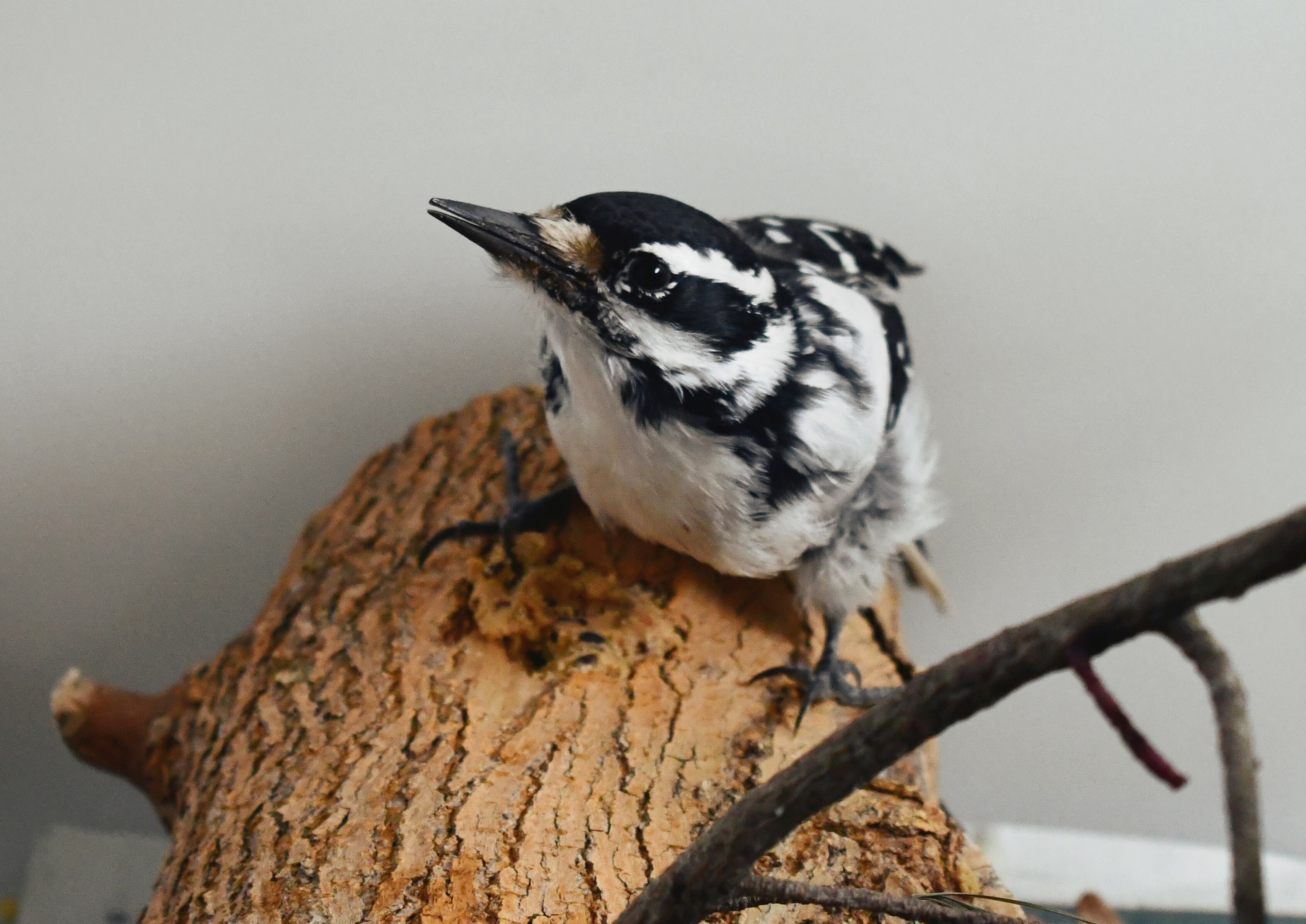
Hairy Woodpecker
The Hairy Woodpecker is a Downy-lookalike. They can be distinguished from Hairy Woodpeckers by their bill length: a Downy Woodpecker’s bill will be shorter than the rest of their head while a Hairy Woodpecker’s bill will be as long as, or longer, than their head. Hairy Woodpeckers are also a little bigger, averaging 8 to 9-inches long.
At the very beginning of this year, DCHS’s Wildlife Center admitted a female Hairy Woodpecker after it flew into a window. She had evidence of physical trauma, including a shoulder girdle fracture, but after treatment, pain medications, and cage rest, she was ready to go outside. Soon after that, she was released!
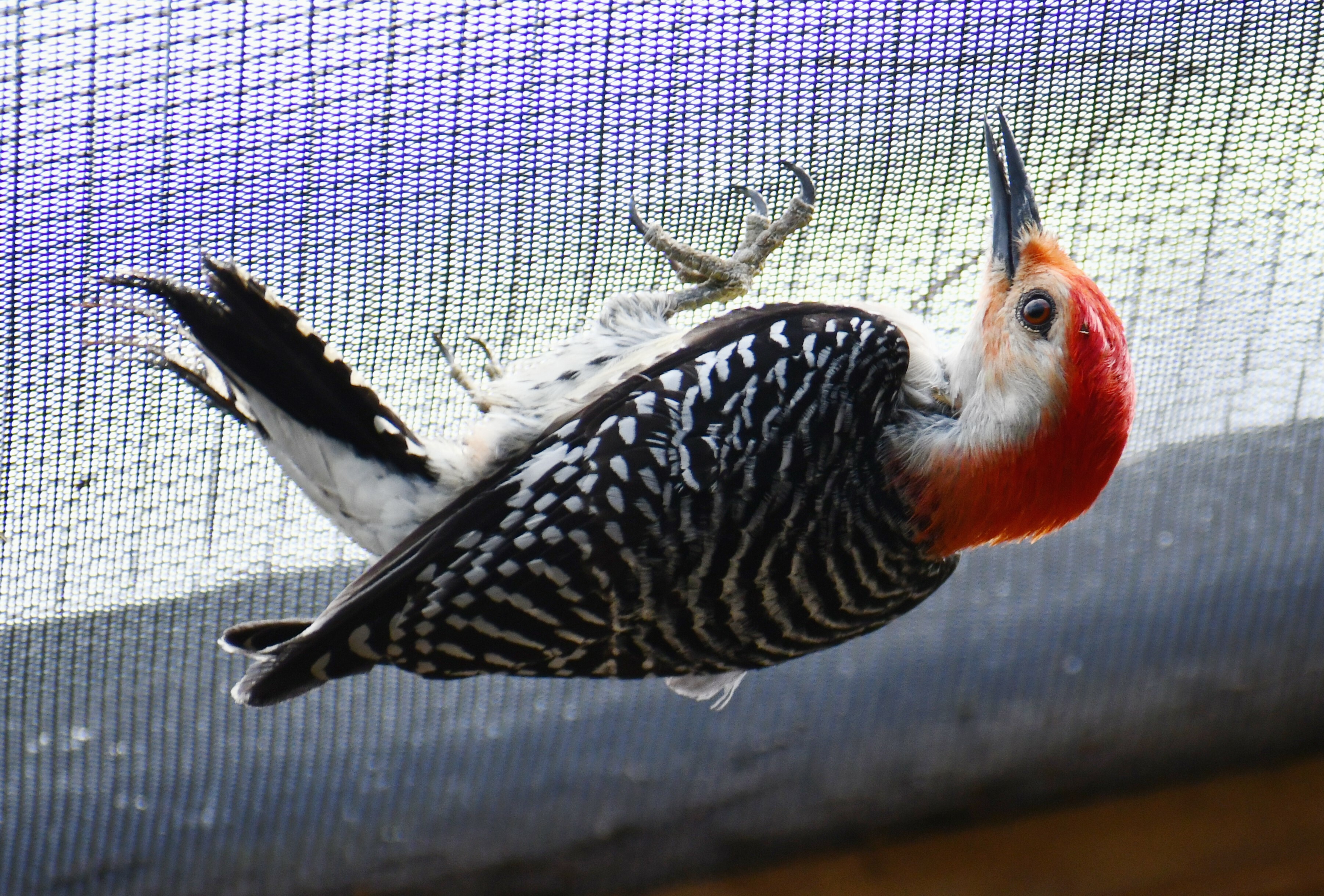
Red-bellied Woodpecker
This is another suet-loving woodpecker that is often seen at people’s bird feeders. Despite its name, its belly does not appear very red unless the bird is in hand. Males will have red plumage extending from the back of their neck to their nares. The female, on the other hand, will have red on the back of its neck, but not on the top of its head.
An adult male came into the Wildlife Center after a window collision. He had a quick recovery before being released in April!
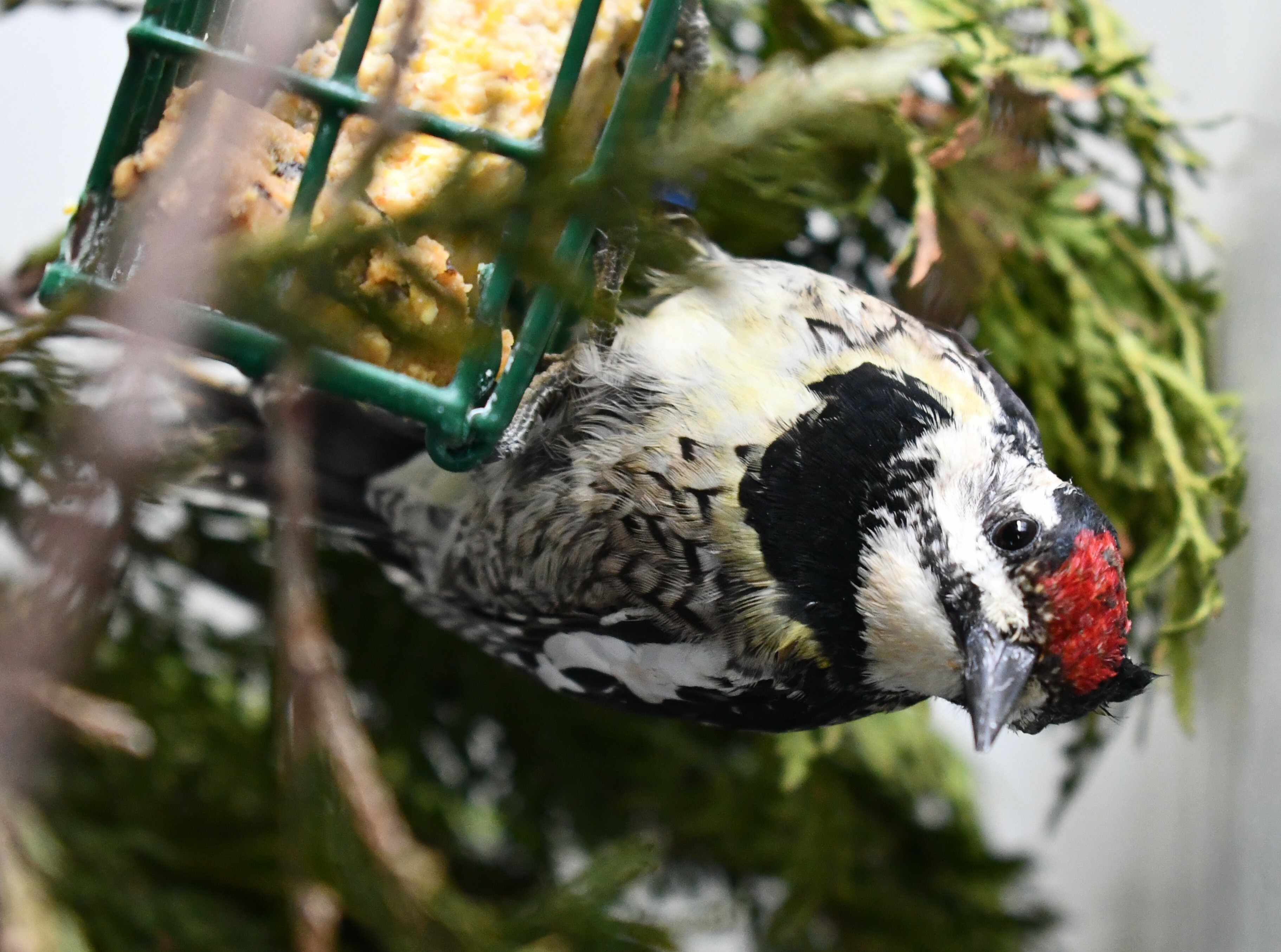
Yellow-bellied Sapsucker
This species of woodpecker has another deceiving name, as their “yellow belly” is rarely visible when you see them clinging to trees in the wild. This woodpecker species is a sap-specialist. They will make distinctive rows of shallow holes in trees that produce sap and then use their brush-like tongue to lap up the sap from the holes. Unlike many of our other woodpeckers in Wisconsin, this bird is migratory, so we don’t see them during the winter months.
Most sapsuckers are admitted during the spring and fall migration time periods. And, like many of the other woodpeckers admitted to DCHS’s Wildlife Center, a female came in after experiencing a window collision and suffering ocular trauma. She quickly recovered and was released in April!
Northern Flicker
Unlike many of our other woodpeckers, Northern Flickers are often seen on the ground foraging for food. This is because they are looking for their favorite food: ants! They often search for ants in fallen, rotting wood.
This bird actually has two plumage forms—the red-shafted and the yellow-shafted. These forms describe the two different colors of the flight feather shafts. West of The Rockies, the red-shafted Northern Flicker predominates, and here, East of The Rockies, the yellow-shafted Northern Flicker predominates.
Only one Northern Flicker has been admitted to DCHS’s Wildlife Center in 2023, and sadly it was unable to be rehabilitated. It had significant injuries to its right wing, a radius luxation and humerus fracture, possibly from hitting a window or being hit by a car.
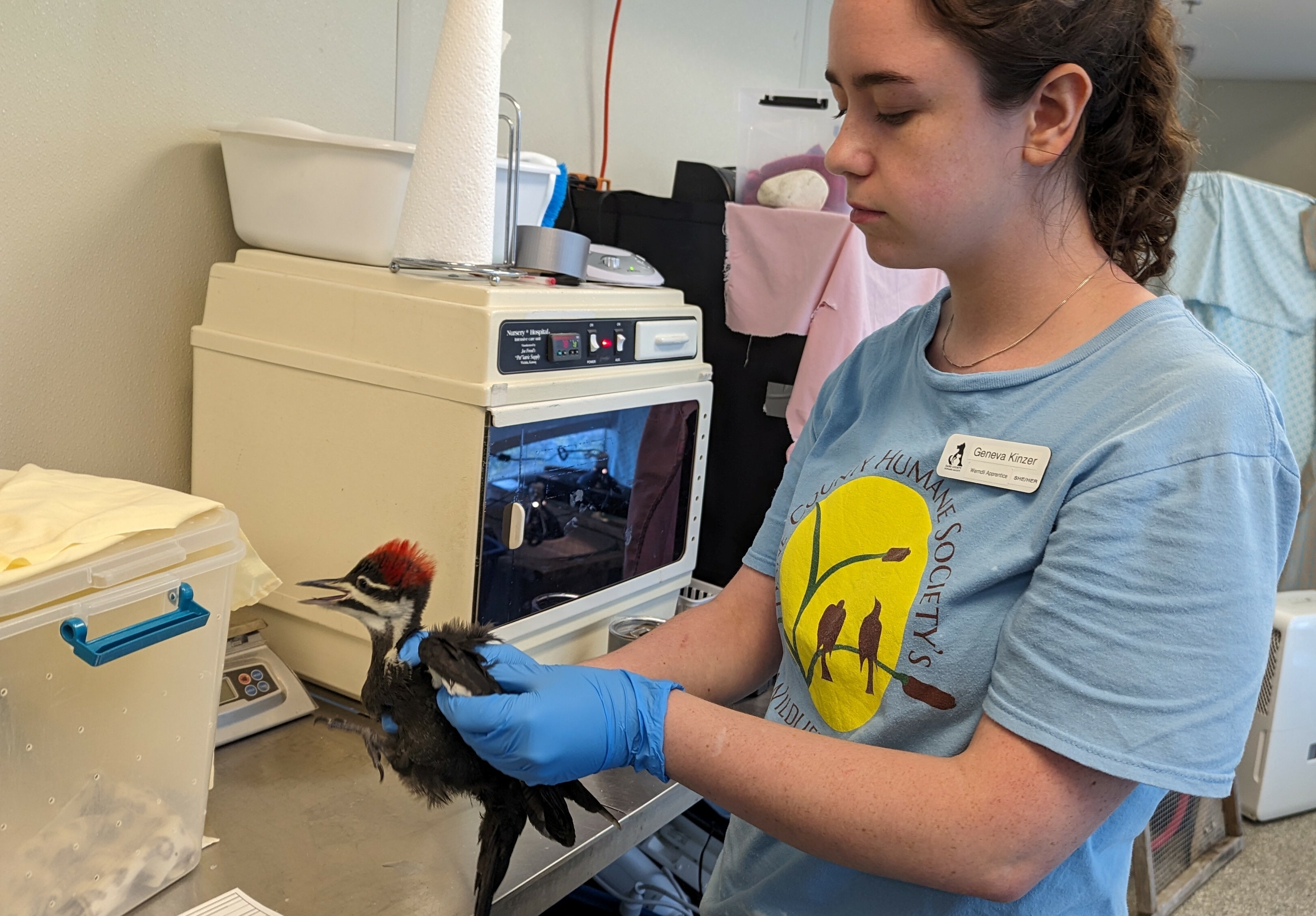
Pileated Woodpecker
This species is the largest of the Wisconsin woodpeckers. Pileated Woodpeckers are nearly the size of a crow and are often seen in mature forests, though they are sometimes seen at suet feeders, too! If you are wondering if a Pileated Woodpecker is in an area, the most obvious evidence is of large, rectangular holes that they excavate in trees. They use these deep cavities to reach the tunnels of carpenter ants, their favorite food. You can also listen for their loud, resonating, “witch-laugh” like call. Male and female Pileated Woodpeckers can be distinguished by the color of their “mustache”—males have a red mustache and females have a black mustache.
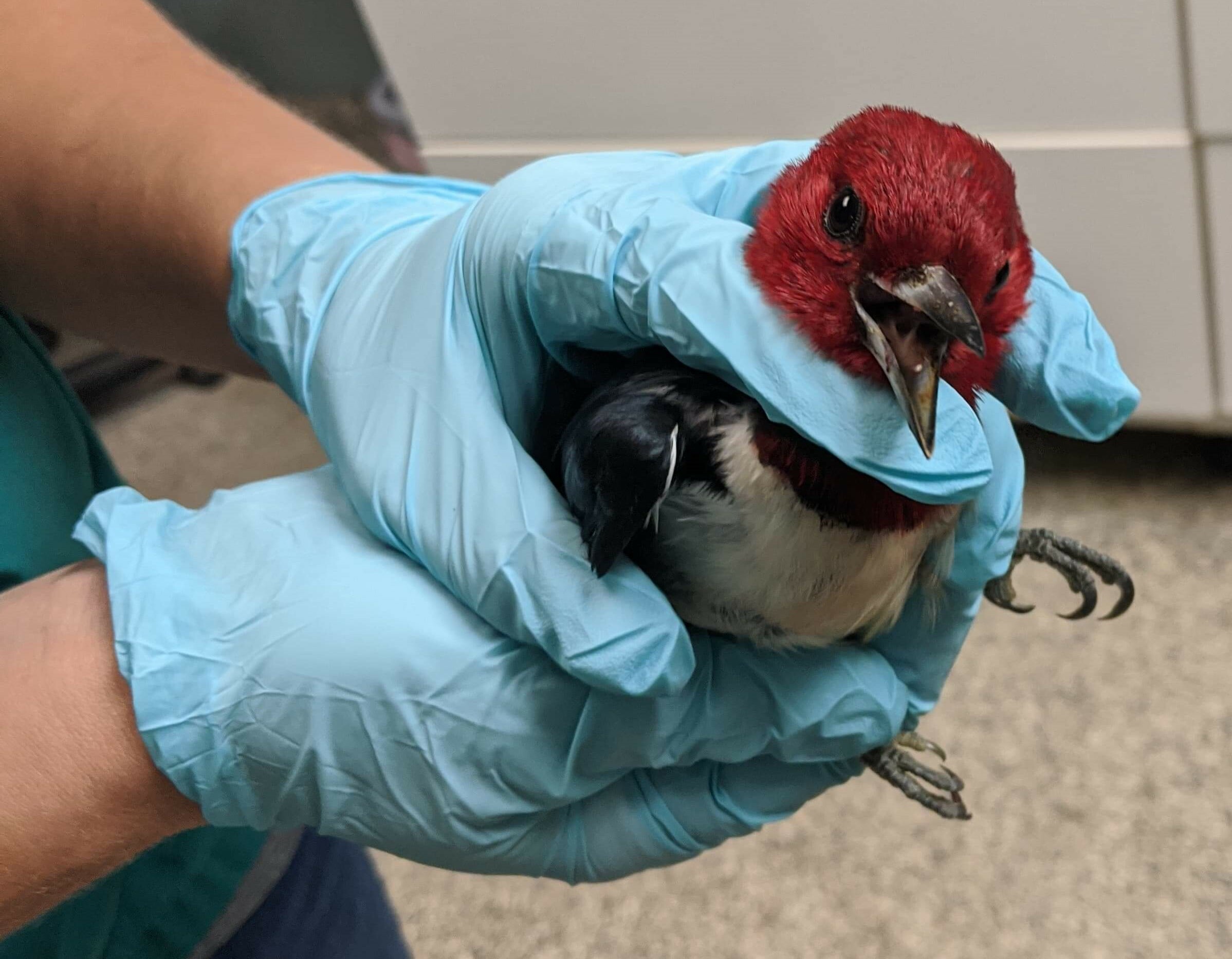
Red-headed Woodpecker
This is the only Wisconsin Woodpecker species we have yet to admit this year!
Many people mistakenly call the Red-bellied Woodpecker species a Red-headed Woodpecker because they can each have red on their heads. However, the true Red-headed Woodpecker has an all-red head rather than a patch of red. Unlike the other woodpeckers, male and females look the same. Red-headed Woodpeckers are typically associated with oak trees.
The Red-headed Woodpecker was previously listed as Near-Threatened by the International Union for Conservation of Nature's Red List, but increased habitat management has stabilized their populations and they are now listed as Least Concern!
Charlotte Chorzempa is an Assistant Wildlife Rehabilitator.


